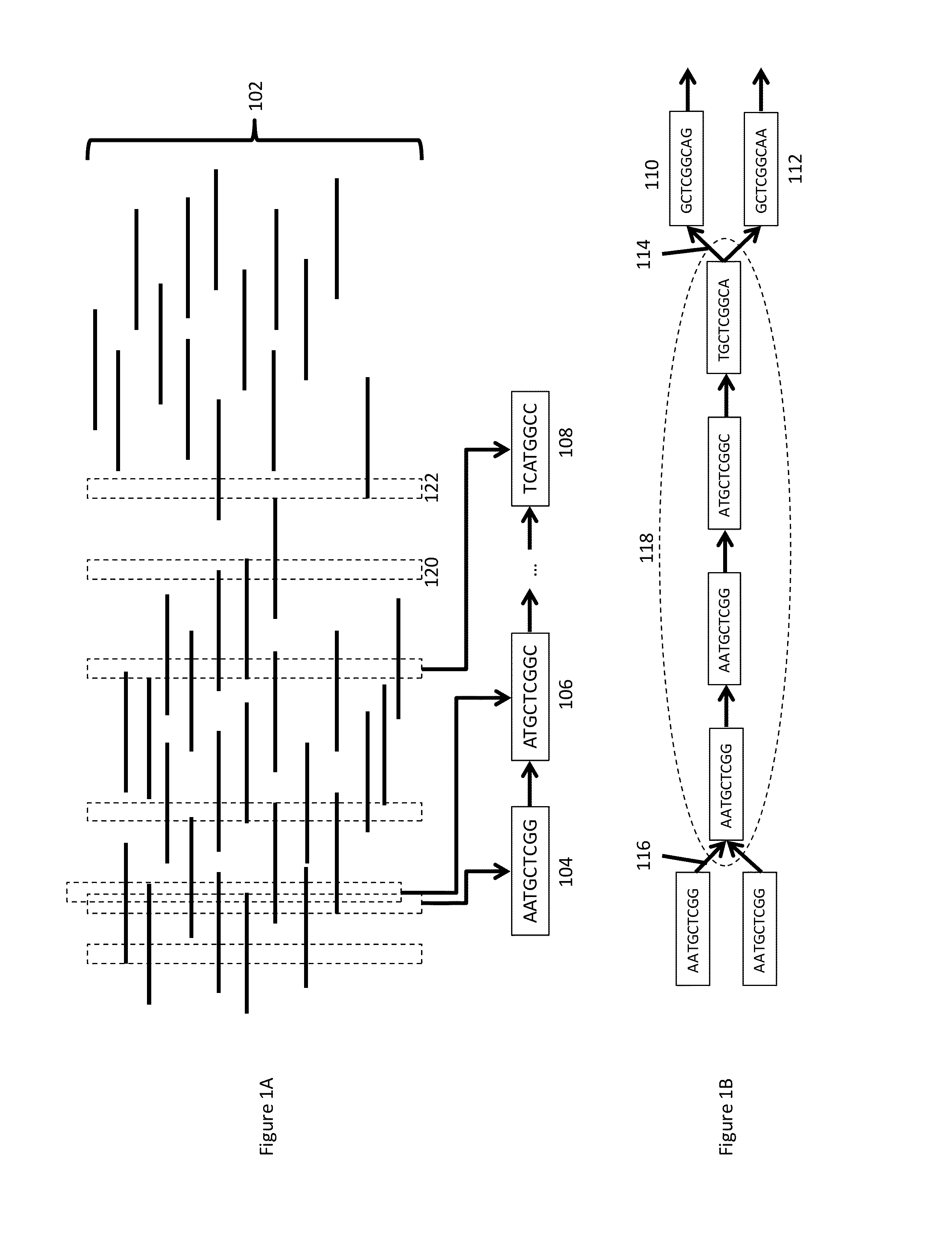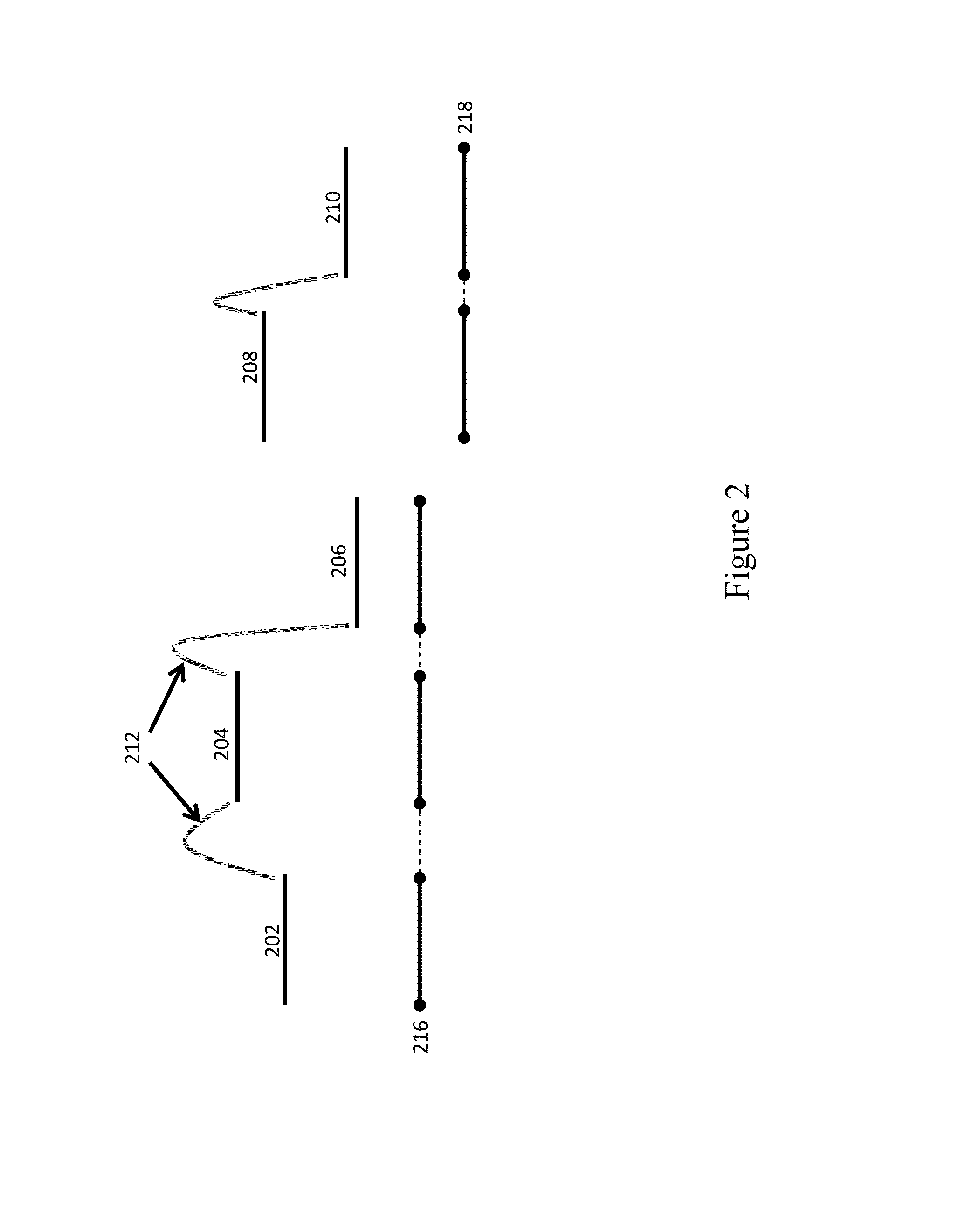Processes and systems for nucleic acid sequence assembly
a nucleic acid sequence and process technology, applied in the field of nucleic acid sequence assembly process and system, can solve the problems of assembling relatively short sequence reads into much longer contiguous sequences, affecting the quality of nucleic acid sequences,
- Summary
- Abstract
- Description
- Claims
- Application Information
AI Technical Summary
Benefits of technology
Problems solved by technology
Method used
Image
Examples
Embodiment Construction
[0046]The present disclosure generally provides methods, processes, and particularly computer implemented processes and non-transitory computer program products for use in the analysis of genetic sequence data. The processes and products described herein are especially useful in the assembly of shorter nucleic acid sequence data into longer linked and preferably contiguous genetic constructs, including large contigs, chromosomes and whole genomes.
[0047]The invention and various specific aspects and embodiments will be understood with reference to the following drawings and detailed descriptions. In some of the drawings and detailed descriptions below, the present invention is described in terms of an important independent embodiment of a system operating on a logic processing device, such as a computer system. This should not be taken to limit the invention, which, using the teachings provided herein, can be applied to any number of logic processors working together, whether incorpo...
PUM
 Login to View More
Login to View More Abstract
Description
Claims
Application Information
 Login to View More
Login to View More - R&D
- Intellectual Property
- Life Sciences
- Materials
- Tech Scout
- Unparalleled Data Quality
- Higher Quality Content
- 60% Fewer Hallucinations
Browse by: Latest US Patents, China's latest patents, Technical Efficacy Thesaurus, Application Domain, Technology Topic, Popular Technical Reports.
© 2025 PatSnap. All rights reserved.Legal|Privacy policy|Modern Slavery Act Transparency Statement|Sitemap|About US| Contact US: help@patsnap.com



